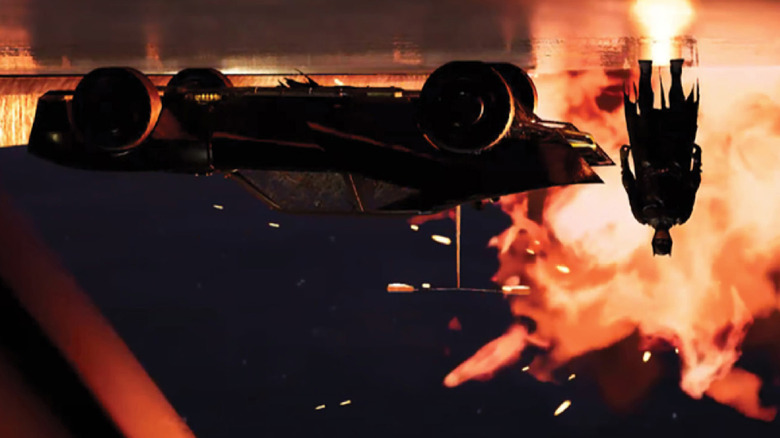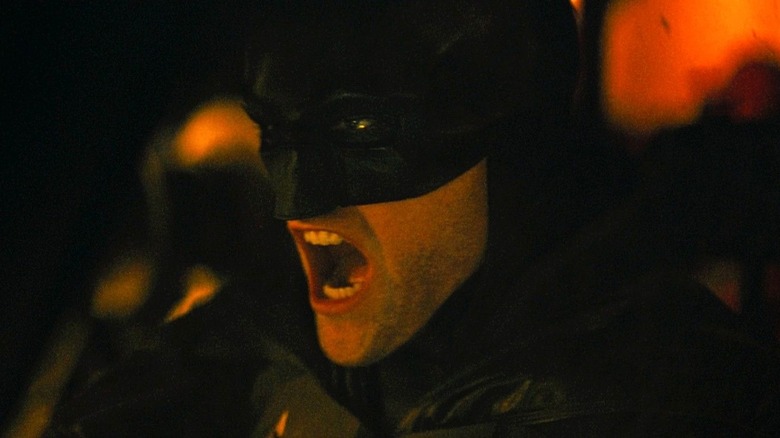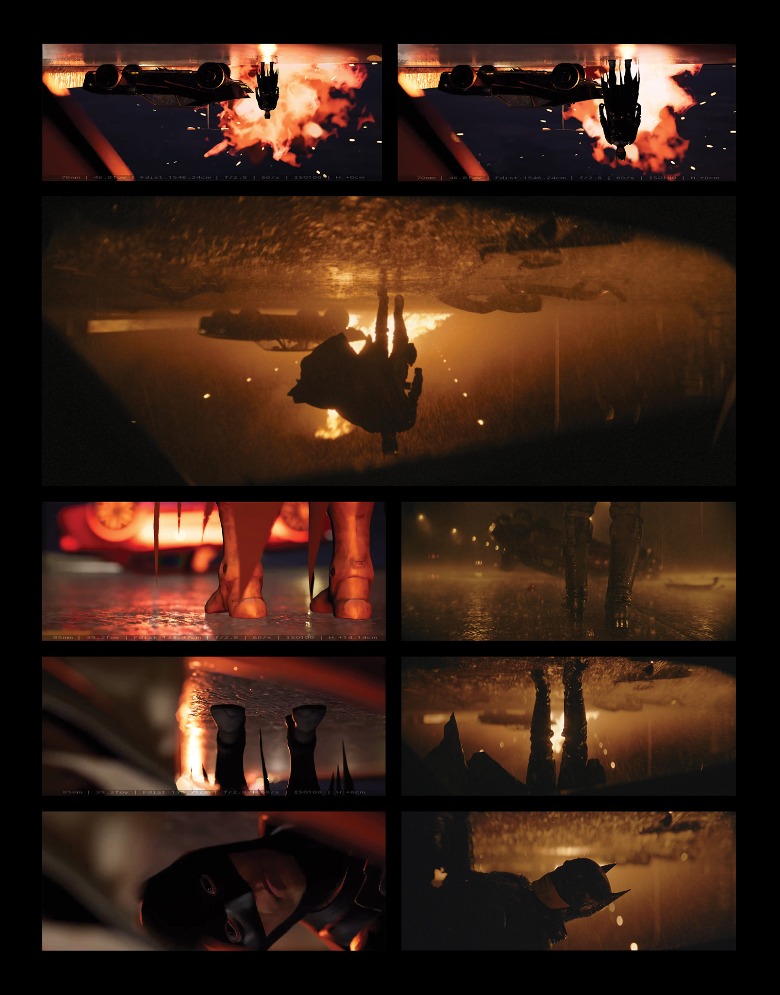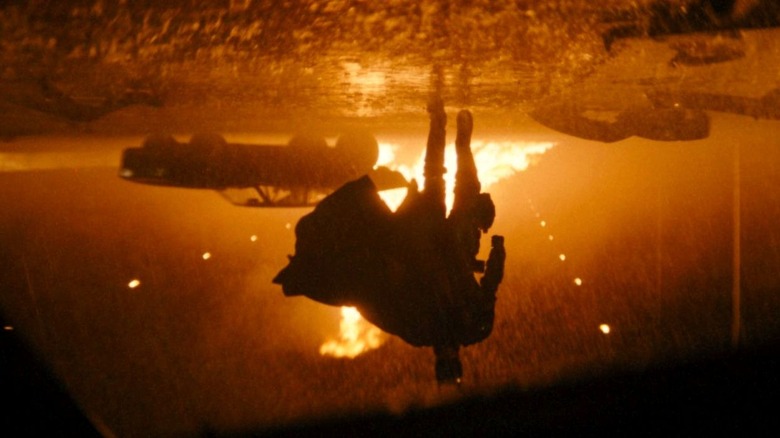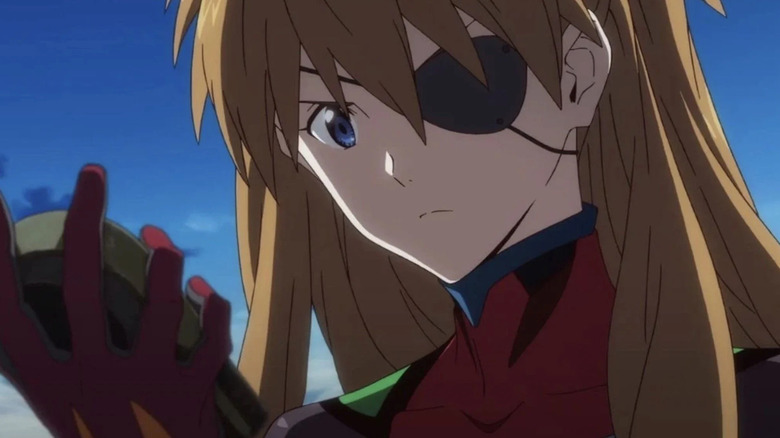How The Batman Used Virtual Reality Behind The Scenes
A lot has been said about the revolutionizing technology that is the "Volume" (also known as "Stagecraft"), which first entered the public consciousness with "The Mandalorian." The technology has allowed big productions to essentially do real-time green screen effects in a vastly more realistic and tactile way, with giant LED screens allowing production to visualize what a digital location looks like on set and in-camera, including the ability to adjust things like lighting and geography on the spot.
A less talked about but equally revolutionary technology is the rise of virtual reality being used to build entire sets for pre-visualization, or previs. This has basically taken storyboards to a whole new level, allowing for the creation of virtual sets that filmmakers can use to plan entire sequences long before actors arrive on set. Though versions of this technology have existed for a while, the big change has come with VR becoming a fully immersive tool.
Thanks to this technology, director Matt Reeves perfected a lot of sequences in "The Batman," including the stunning Batmobile chase, which you can now watch over and over again on HBO Max.
El rata virtual
The book "The Art of the Batman" by James Field (now available), contains images comparing finished scenes in "The Batman" and digital previs renderings mean to help with framing. You can see how easily and accurately Reeves and his team could plan out the shot using the VR sets during pre/production so that the shooting could go more smoothly. Reeves said:
"I've always found the previs aspect of the filmmaking process to be challenging. I have to find a personal connection to where the camera goes, and it's hard to explore a virtual space without being able to walk right into it. With 'The Batman,' the opportunity finally happened. [Production designer] James Chinlund designed the sets in VR. So we were able to walk those sets before they were ever built. The experience was amazing. I could look for shots and act out what I had written. And we could figure out on the spot how to change a set based on exploring the space together."
Previs existed long before Robert Pattinson gave us emo Batman, with productions like "Mad Max: Fury Road" and "The Lord of the Rings" relying heavily on storyboards to essentially map out the entire movie in 2D in order to plan out angles and framing. But today's productions like "The Batman" can use VR to render sets in real time, which means they can make changes on the fly. Reeves said in "The Art of The Batman" book:
"Even after James had built the physical sets, we still had these digital environments, and I realized that I wanted to shot-make in the VR. I could go in with somebody who ran the game engine, and I put on the lenses and line up shots. It's a giant leap forward in being able to work in the virtual world, because for me, everything is about standing in a space, looking through a lens, moving slightly to the left, looking slightly to the right, and going on a search."
Bat out of hell
This brings us to one of the most elaborate sequences in "The Batman" — the Batmobile chase. Earlier this year, Matt Reeves explained how he used VR sets to help stage the sequence
"[Stunt coordinator Rob Alonzo] took me through every single possible place. We had scanned in the route, and we could play on a kind of loop what the path of the Batmobile was, and I could look at the shots in VR before we ever shot them," Reeves explained. "I set all of these shots basically beforehand, and we made this crazy storyboard that was made of screengrabs from VR, from the lenses we had found. And so it was an incredibly involved process."
One particularly stunning shot has Penguin upside down in his car seeing Batman walk towards him. In an interview with Looper, Reeves said he found that show thanks to VR. "And I was like, 'Oh that would be really cool.' And all of the shots are almost always guided by this idea of subjectivity, of putting you into a character's point of view."
VR in animation
Even outside of big superhero movies or "Star Wars" shows, animated projects like "The Lion King" and even the fantastic "Evangelion: 3.0+1.0 Thrice Upon a Time" took advantage of previs to stage sequences in ways that traditional animation never could.
In "Evangelion 3.0+1.0," Hideaki Anno poured not only his heart and soul into the project but everything he'd learned from making both animated and live-action projects in order to make one final goodbye to the iconic franchise. In interviews, co-director Kazuya Tsurumaki spoke of how Anno decided to do previs before traditional storyboards, using virtual cameras in order to treat scenes like live-action sets.
"In addition to setting up the stage in 3DCG and using virtual cameras to determine the angles, we also used motion capture to combine the actors' performances. We also built miniature sets and took pictures, so it was a combination of special effects, animation, and 3DCG."
This helped the film achieve a much bigger level of character expression, with subtle character movements and intricate camerawork that brought live-action framing and staging in animation.
As for "The Batman," if the only thing to come out of the VR sets was that upside-down shot, it would have been worth it (from a fan point of view). But the book shows that much more of the film was planned in virtual reality, proving that it gives filmmakers the opportunity to more faithfully bring their vision to life. That's pretty darn revolutionary if you ask me.
"The Batman" is now streaming on HBO Max.
